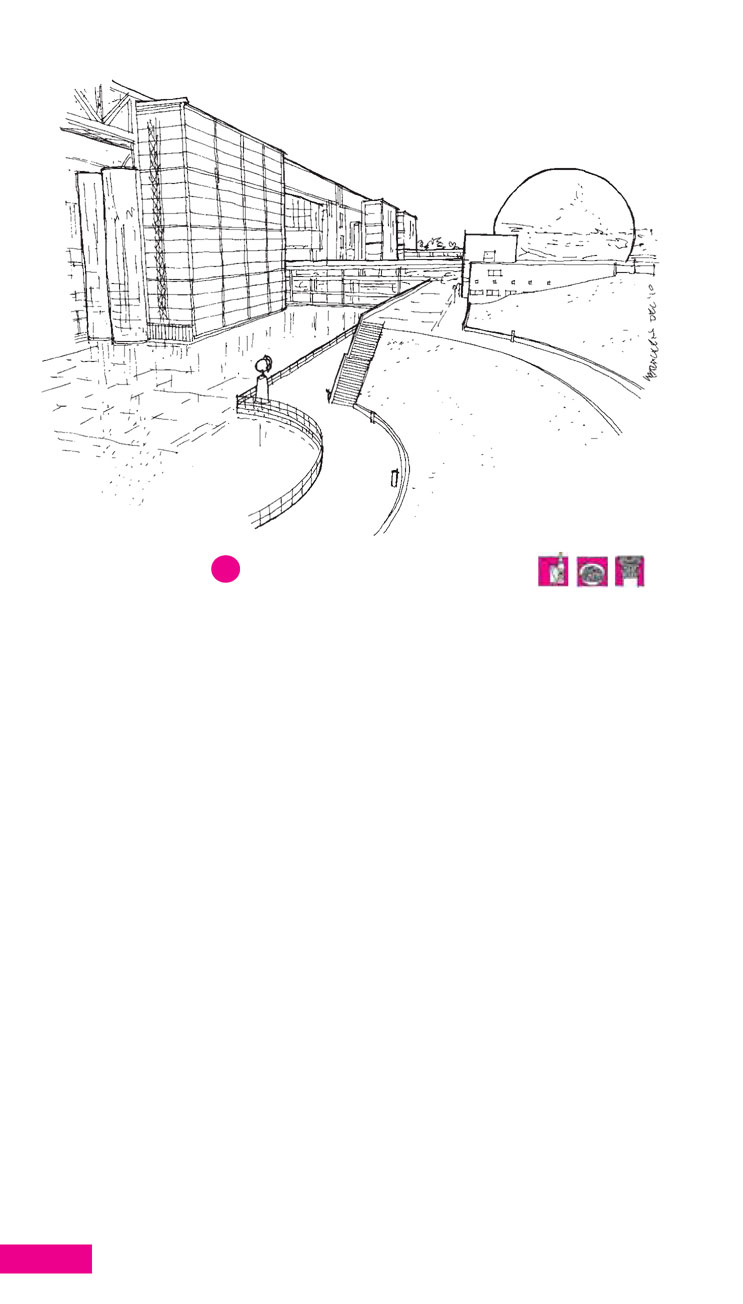La Villette
6
Metro: Porte de la Villette or Porte de Pantin
This is the largest park in Paris, covering 35 hectares (86 acres), and the second largest green space in the city after the cemetery of Père Lachaise. It was originally home to the La Villette slaughterhouses and livestock markets, which were closed down in the 1970s. The park’s design is by Bernard Tschumi, and is the result of an international competition held in 1986. Consisting of 26 red follies scattered through 11 themed gardens, it houses the largest science museum in Europe. Tschumi’s follies are linked to each other and the rest of the park via a series of landscaped walkways. They provide various services, including a children’s workshop and a number of restaurants.
The Cité des Sciences et d’Industrie is a vast museum which is hugely popular with children because of its hands-on displays. Occupying the largest of the old abattoirs, architect Adrien Fainsilber created an imaginative high-tech, five-storey building that soars 40 metres (133 feet) into the air and covers more than 3 hectares (7 acres). The museum’s main exhibit is Explora, a fascinating guide to the world of science and technology. There is also a children’s science city, some cinemas, a science newsroom, a library and shops, not to mention the 260-seat Planetarium.
La Géode also contains a cinema, with an enormous 180-degree screen combining visual and sound effects to create a memorable experience. The Cité de la Musique is an elegant all-white complex that is home to a music conservatory, concert hall, library, music studios and a museum which contains more than 4,500 musical instruments, as well as works of art that illustrate the history of music since the Renaissance. The Zénith Theatre is a huge tent that is used for pop concerts. It can seat up to 6,000 spectators.
214

